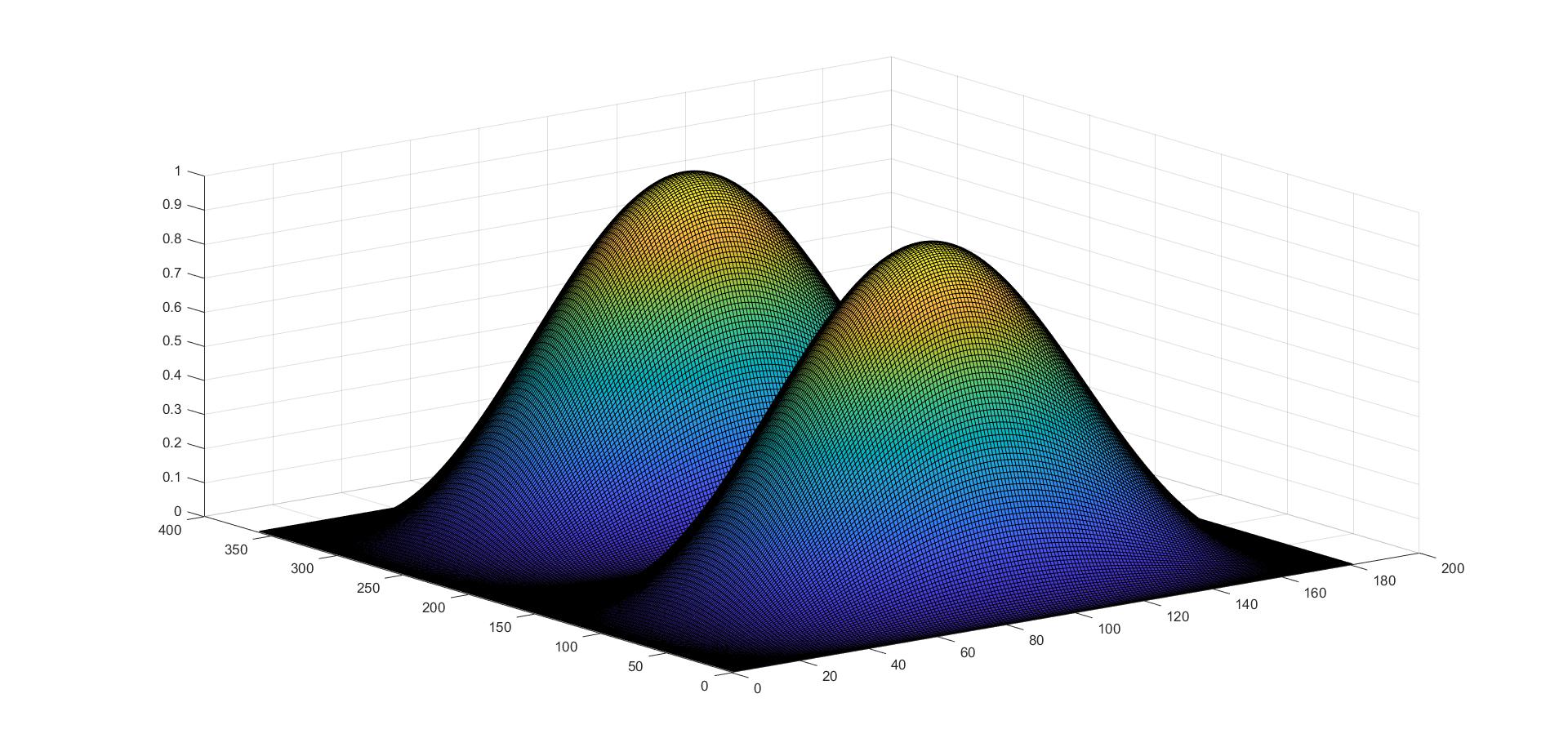
Radiated Power and Maximum Directivity of any Antenna: Theory and Matlab code.
Introduction
The radiated power of an antenna refers to the amount of power that is actually emitted into the surrounding space, in the form of electromagnetic waves. This value is typically measured in watts.
The maximum directivity of an antenna is a measure of its ability to concentrate the radiated power in a specific direction, rather than dispersing it equally in all directions. This value is expressed in decibels (dB) and indicates the gain of the antenna compared to an isotropic radiator, which would have an equal amount of power in all directions. The higher the directivity, the more focused the antenna’s transmission will be in a specific direction.
Software Required
Matlab Software offline Recommended or online software.
Procedure
- Define the current distribution on the antenna: This can be done using a mathematical model or by measuring the current distribution on a physical antenna.
- Calculate the electric and magnetic fields: Use Maxwell’s equations to calculate the electric and magnetic fields generated by the antenna.
- Calculate the Poynting vector: The Poynting vector is the product of the electric and magnetic fields, and is a measure of the energy flow in a particular direction.
- Integrate the Poynting vector over a spherical surface: To obtain the radiated power, integrate the Poynting vector over a spherical surface that surrounds the antenna.
- Calculate the efficiency: The efficiency is the ratio of the radiated power to the input power to the antenna.
- Calculate the average power density: Divide the radiated power by the surface area of the sphere.
- Calculate the maximum power density: Determine the direction in which the radiated power is the highest, and calculate the power density in that direction.
- Calculate the directivity gain: Take the logarithm of the ratio of the maximum power density to the average power density, and express the result in dB.
Algorithm
➢ START
➢ Set the phase degree range 0 to 180
➢ Phi degree=0:360
➢ Convert the degree values of radius
➢ Set elevation angles theta Ranges 0-180
➢ Theta_degree=0:180
➢ Convert the degree values to radius
➢ Setting up the integration step size
➢ Convert it into radiation pattern of an antenna using meshgrid
➢ U=[sin(theta).*sin(phi)].^2
➢ Calculating average pattern
➢ P_avg=sum(sum(u.*sin(theta)*dth*dph))
➢ Calculating directivity
➢ D=4*pi*max(max(u))/p_avg
➢ Directivity in Matlab code
% Radiated power and Directivity of an antenna:
close all;
clear all;
clc;
format long;
%Angle definition:
%Azimuth angle phi ranges between 0 to 360 degrees:
phi_degree = 0:360;
phi_rad = phi_degree * pi/180; %Converting degrees to radians
%Elevation angle theta ranges between 0 to 180 degres:
theta_degree = 0:180;
theta_rad = theta_degree* pi/180; %Converting degrees to radian
%integration step size:
dth=theta_rad (2) -theta_rad (1);
dph=phi_rad (2) -phi_rad (1) ;
[THETA, PHI] =meshgrid (theta_rad, phi_rad);
%Radiation pattern of an antenna:
U = (sin (THETA).*sin (PHI) ).^2;
%Performing nunerical integration to obtain
%average power radiated by the antenna:
P_avg=sum(sum (U.*sin(THETA)*dth*dph) );
%Note sum() is discrete time equivalent of integration
%use of sum() twice is to integrate w. r.t. theta and phhi
%Directivity:
%D=4*pi*P_max (theta, phi)/P_avg(theta, phi)
D=4 *pi*max(max (U) )/P_avg;
D_db = 10*log10(D);
fprintf('Average power radiated by the antenna is %f\n', P_avg);
fprintf('Directivity of the antenna is %f(dimensionless) and %f(in dB)\n',D,D_db);
surf(U);
Code Output

Output in Command Prompt
Average power radiated by the antenna is 4.188790
Directivity of the antenna is 3.000000(dimensionless) and 4.771213(in dB)
Explore More Projects on Matlab
- Microwave and Antenna Various Matlab CodesMicrowave and Antenna Various Matlab Codes. Some of the Projects are below. Polar form for a Symmetrical Dipole of Finite… Read more: Microwave and Antenna Various Matlab Codes
- Multiple Input Multiple Output(MIMO) using MatlabIntroduction Multiple Input Multiple Output(MIMO) using Matlab. Multiple Input Multiple Output (MIMO) is a technology used in wireless communication systems… Read more: Multiple Input Multiple Output(MIMO) using Matlab
- Pulse Width Modulation(PWM) working Principal using MatlabIntroduction Pulse Width Modulation(PWM) working Principal using Matlab. PWM stands for Pulse Width Modulation. It is a type of digital… Read more: Pulse Width Modulation(PWM) working Principal using Matlab
- Quadrature Amplitude Modulation(QAM): Theory and MatlabIntroduction Quadrature Amplitude Modulation(QAM): Theory and Matlab QAM stands for Quadrature Amplitude Modulation. It is a method of combining two… Read more: Quadrature Amplitude Modulation(QAM): Theory and Matlab
- Polar form for a Symmetrical Dipole of Finite Length: Matlab ScriptPolar form for a Symmetrical Dipole of Finite Length: Matlab Script. This Experiment include finding of: Introduction The polar form… Read more: Polar form for a Symmetrical Dipole of Finite Length: Matlab Script
- Radiated Power and Maximum Directivity of any Antenna: Theory and Matlab codeRadiated Power and Maximum Directivity of any Antenna: Theory and Matlab code. Introduction The radiated power of an antenna refers… Read more: Radiated Power and Maximum Directivity of any Antenna: Theory and Matlab code
- Polar form for a Loop Antenna with Uniform Current: Theory and Matlab codeIntroduction The polar form for a loop antenna with uniform current can be determined using the far-field approximation and the… Read more: Polar form for a Loop Antenna with Uniform Current: Theory and Matlab code
- Two Dimensional(2-D) Polar and Semi-Polar Patters using Matlab codeIntroduction Two Dimensional(2-D) Polar and Semi-Polar Patters using Matlab code. Two-dimensional (2-D) polar and semi-polar patterns are graphical representations of… Read more: Two Dimensional(2-D) Polar and Semi-Polar Patters using Matlab code
Join us for Regular Updates
| Telegram | Join Now |
| Join Now | |
| Join Now | |
| Join Now | |
| Join Now | |
| Join our Telegram | connectkreations |
About Connect Kreations
We the team Connect Kreations have started a Blog page which is eminently beneficial to all the students those who are seeking jobs and are eager to develop themselves in a related area. As the world is quick on uptake, our website also focuses on latest trends in recent technologies and project learning and solutions. We are continuously putting our efforts to provide you with accurate, best quality, and genuine information. Here we also have complete set of details on how to prepare aptitude, interview and more of such placement/ off campus placement preparation.
Connect Kreations is excited to announce the expansion of our services into the realm of content creation! We are now offering a wide range of creative writing services, including poetry, articles, and stories.
Whether you need a heartfelt poem for a special occasion, a thought-provoking article for your blog or website, or an engaging story to captivate your audience, our team of talented writers is here to help. We have a passion for language and a commitment to creating high-quality content that is both original and engaging.
Our services are perfect for individuals, businesses, and organizations looking to add a touch of creativity and personality to their content. We are confident that our unique perspectives and diverse backgrounds will bring a fresh and exciting voice to your project.
Thank you for choosing Connect Kreations for your content creation needs. We look forward to working with you and helping you to bring your vision to life!
The website is open to all and we want all of you to make the best use of this opportunity and get benefit from it..🤓
- Our Websites: Connect Kreations
- Our Websites: StudentsDev Connect Kreations





